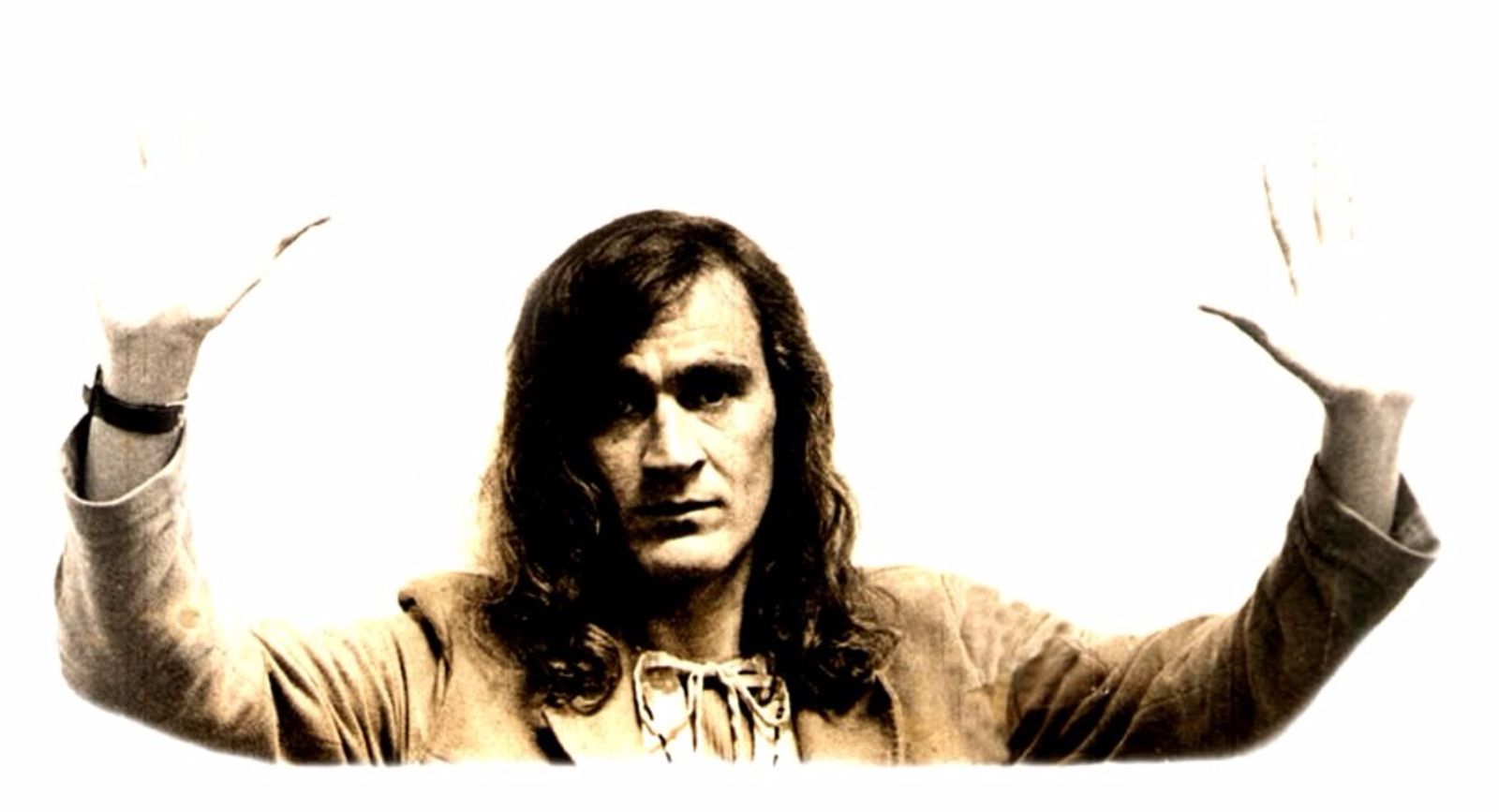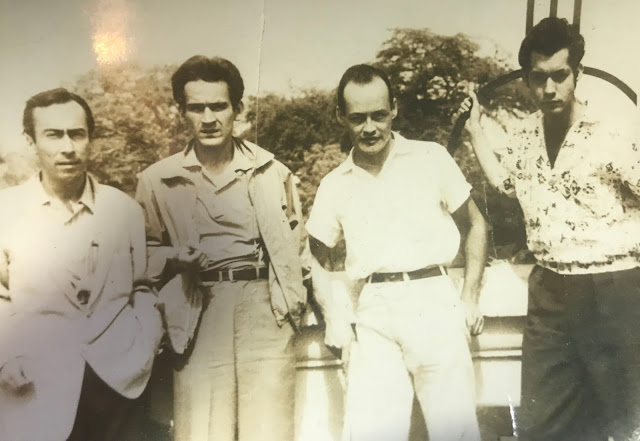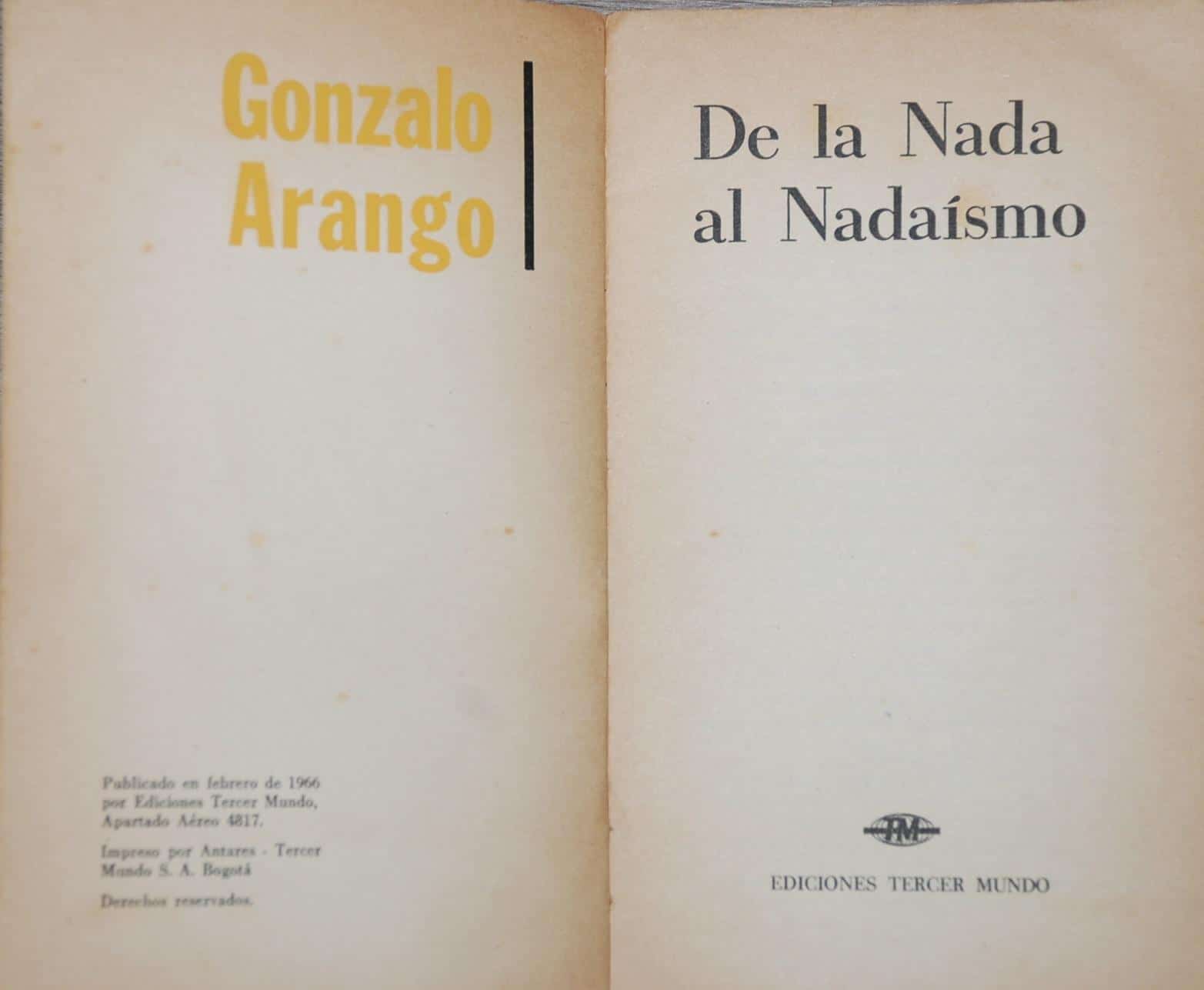
In the middle of the XNUMXth century in Europe, especially in France, a new literary and philosophical trend developed known as Existentialism. In parallel, on the other side of the Atlantic, the Nothingness I was born in the Colombian city of Medellin in the early 60.
From its very birth, Nadaísmo was constituted as a literary and philosophical opposition to the cultural environment established by the academy, the church and the Colombian tradition. It has its bases in a literary movement that appeared in the country, with a great content of social protest. In his name, it is already indicated the origin and the end of the group: nothingness. It is the expression of a generation tormented by misery and alienation and whose members, with generosity and enthusiasm, raised an aesthetic that should be both destructive and creative at the same time.
Nadaísmo was an overwhelming avant-garde current that revised and reinterpreted the meaning of human existence in a totally new way. All its essence and its message was captured in the world of art: theater, music and, above all, poetry.
Gonzalo Arango, 'prophet' of Nadaísmo
The main promoter of Nadaism was Gonzalo arango (1931-1976), whose image illustrates the heading of this post.
Arango was a writer, poet, journalist, and playwright. Nicknamed 'the Prophet' by his companions at the University of Antioquia, around him a group of idealistic young people gathered. These would sign in Medellín in 1958 the First Manifesto of Nadaism under the motto: "do not leave an intact faith or an idol in its place." Thus was born one of the few genuinely South American countercultural manifestations.
Among its most prominent figures, in addition to Arango, were Alberto Escobar Angel, Eduardo Escobar, Darius Lemos, Humberto Navarro y Amilcar Osorio, among others. All of them from Antioquia.
Those nothingists declared themselves above all nonconformists and freethinkers, always ready to raise their voices to protest against the reigning social order: the bipartisanship, the bourgeoisie, the conservative traditions ... But they were also against mass revolutions with totalitarian ends as well as against militant literary currents.

Nadaístas en Cali, 1960. Elmo Valencia, Gonzalo Arango, Jaime Jaramillo Escobar (then X-504) and Jotamario Arbeláez.
Source: ntc-documentos.blogspot.com
However, Nadaism also had a certain iconoclastic component that would earn him many antipathies. Driven by their visceral rejection of what they called "anachronistic Colombian literature," the Nadaistas starred a controversial book burning in the Plazuela de San Ignacio in Medellín in 1958. The following year, they dared to sabotage the First Congress of Catholic Intellectuals, an incident that resulted in the arrest of Gonzalo Arango himself.
Curiously, the 'prophet of Nadaism' would end up being repudiated by his followers a decade later. In expressing his support for the president Carlos Lleras-Restrepo, was branded a traitor. Gonzalo Arango himself would end up abandoning the movement that he himself helped create shortly before dying tragically in a car accident at the age of 45.
Bases of Nadaism

Detail of the cover of the First Nadaist Manifesto of 1958
Although it shares many of the characteristics and objectives of other contemporary cultural currents such as the movement beatnik American or Camus and Sartre's French existentialismIn reality, Nadaism is a totally original creation with its own personality. These are its bases or main characteristics:
Independence
The Nadaism was never subject or subordinate to any organization, ideology or political party. It was precisely Arango's approach to the world of politics that cost him the rejection of the nadaists with whom he had shared so many adventures and thoughts.
In the same way, it was a movement that was one hundred percent original and completely detached from any European thought or ideal.
Rupturism
The strict rules of the art world ties that had to be broken. The Nadaist poets refused to respect the metric and rhythmic precepts in search of a different form of expression, more irrational and freer.
This aesthetic and expressive revolution it also came to prose, which was oriented towards the illogical and the absurd. In a way it was an exploration in search of a new creative language.
Humanism
One of the great purposes of Nadaism was to popularize culture, until then monopolized by the ruling classes of Colombia.
On the other hand, explicitly renouncing previous traditions and religion, the Nadaists defended that man could live fully your existence without giving up any of your life options.
Temporality
From the first moment, the Nadaists conceived their movement as something temporary. This is how it should be: By definition, a revolution cannot last forever, but must die to make way for the next. Otherwise, you run the risk of becoming what you hate.

From Nothingness to Nothingness (1966), by Gonzalo Arango
Authors and outstanding works of Nadaísmo
Because of his condition as the creator of Nadaism, the works of Gonzalo arango they constitute the backbone of this literary and philosophical current. Thus, among the most representative are the aforementioned First Nadaist manifesto (1958) The red shirts (1959) Sex and saxophone (1963) and From Nothing to Nothingness (1966)
Other great Nadaist authors worthy of being highlighted are the following:
- Eduardo Escobar, prolific writer and poet who continues to publish today. Among his most recognized works it is worth noting Invention of the grape (1966) Chronic nadaism and other epidemics (1991) and Loose ends (2017)
- Jaime Jaramillo, prominent essayist and historian. He was the author, among other works, of Some aspects of the Colombian personality (1969)
- Amilcar Osorio (aka Amilkar U. Later) is considered along with Arango as the great founder of the Nadaist movement. Curiously, his written work is scarce, but his thoughts and reflections had a great impact. Like Arango, he would also end up estranged from the Nadaistas and would also die prematurely in 1985.
- Elmo valencia, Author of islandada (1967), considered a fictionalized history of this cultural movement.
regards
Congratulations on your work
Both yesterday and today, the exercise of thinkers and critics of our reality is very pertinent, I would like to know about the different aspects of the NADAISTAS poets and writers in the 60s, 70s, among others, PLACES WHERE THEY GATHERED. It seems to me that for the MEMORY of the city it is very important.
Thank you very much for your attention and response.